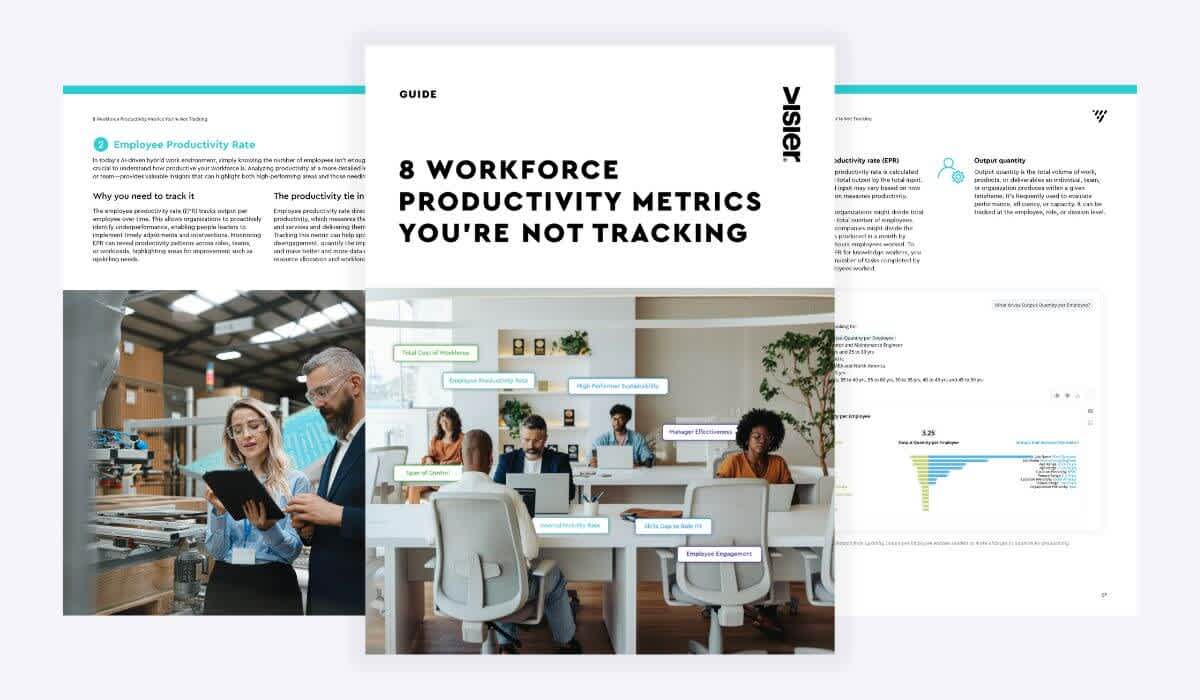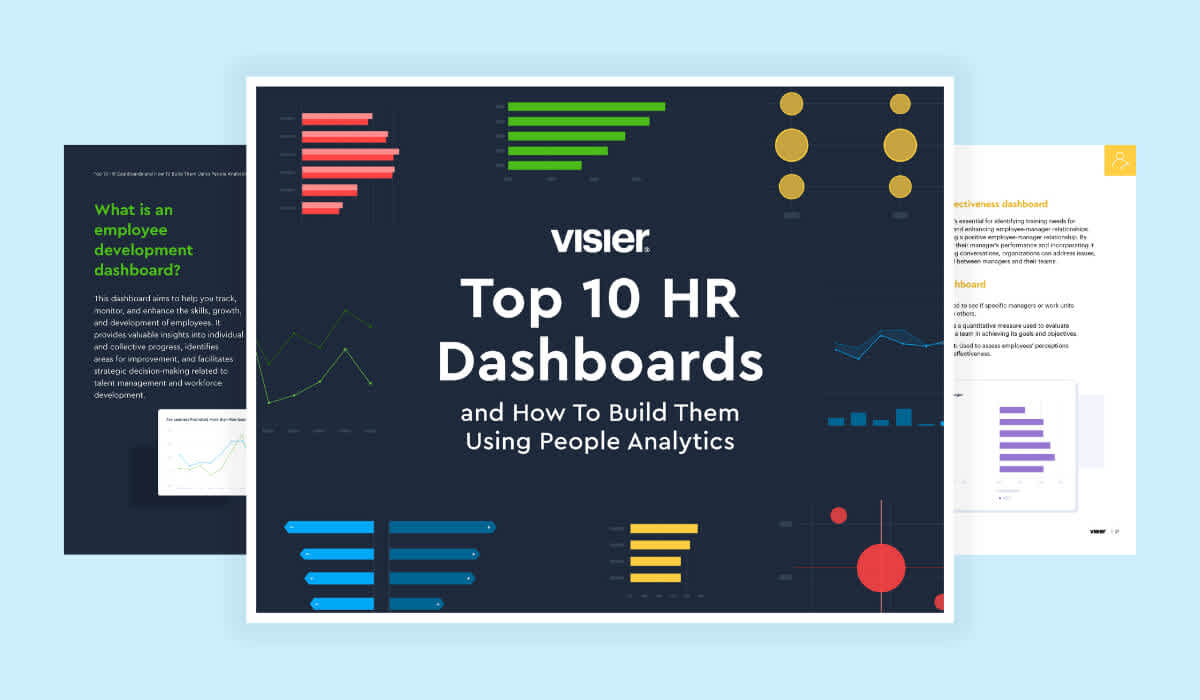High Performers and Their Impact on Organizations
High performers consistently exceed expectations, inspire peers, and drive the company forward. Learn how to identify top performers and develop their skills to keep them happy and engaged.

High performers are employees who go above and beyond to contribute more than expected to their organizations. They are the employees who are highly productive, highly efficient, and who deliver a high level of service to internal and external customers.
High-performing employees contribute significantly to business goals and objectives, have a positive impact on organizational culture and employee engagement, and have a high potential for professional development and growth within the organization.

What is a high-performing employee?
A high-performing employee is one who delivers desired results, and then some. They get their work done effectively and efficiently and work well with others in the process.
High-performing employees contribute positively to the organization through their work, ideas, and insights. Their exceptional performance helps drive productivity, efficiency, and innovation, leading to improved business outcomes. They are employees who often move up in the organization to increasingly more challenging roles. High performers are critical to the ongoing success of virtually every organization.
High performer vs. high potential: what’s the difference?
There is a difference between a high performer and a high-potential employee. A high performer is an employee who is currently exhibiting the traits and outputs that set them apart from others.
A high-potential employee may not be currently exhibiting that kind of performance but may have the capacity or the potential to do so given the right opportunities, skills, training, and support.
How to identify high performers on your team
It’s important for organizations to identify high performers and high-potential employees. These employees can have a marked, positive impact on the organization and its desired outcomes.
Organizations need to ensure that their people managers and supervisors understand the value of high performers and have the knowledge and access to necessary insights to identify them through their ongoing interactions with their direct reports.
This might be part of the performance management process, but should also be part of ongoing business operations and coaching to ensure that high performers don’t skip through the tracks or leave for other opportunities.
High performers can be identified through the output or outcomes they deliver, through their positive outlook and positive contributions, or through their ability to deliver a high level of service and support to others. Once identified, it’s important that you take the appropriate steps to offer the support and resources they need to continue their development.
Below are some common key traits of high performers. Remember, they can vary by company and the individual's role. For example, a key trait of a high-performing sales representative is strong, consistent revenue generation. A key trait of a customer service employee might be high ratings from customer surveys.
Key traits to look for in high-performing employees:
Consistently high productivity: High performers maintain a steady, above-average output, consistently meeting or surpassing expected targets and deadlines.
Strong problem-solving capabilities: High performers have exceptional analytical skills and the ability to creatively approach challenges to find innovative solutions that drive the organization forward.
Ability to maximize resources and drive efficiency: High-performing employees excel at optimizing available resources, streamlining processes, and identifying ways to increase productivity without compromising quality.
Adaptability to changing demands and situations: High-performing employees are highly adaptable to change and are able to quickly adjust their approach and skills to meet evolving business needs and navigate unexpected challenges.
Alignment with company-specific performance metrics: Top performers consistently achieve or exceed the key performance indicators (KPIs) that are most crucial to their organization's success.

How to develop your high performers
1. Identify their skills and goals
When employees are hired, they come to your organization with certain skills and goals. Over time, these skills and goals can change. It’s important to have ongoing conversations to ensure that employees are receiving the support and encouragement they need. Reskilling and upskilling are ongoing efforts that employers can use to prepare employees for current workforce needs as well as anticipated future needs.
Managers and supervisors should have ongoing conversations with employees and should seek their feedback regularly to help identify desired skills and goals in support of organizational objectives.
2. Recognize their achievements
Recognition is a critical part of nurturing high potential employees and something that should occur both formally and informally. Formal recognition can come through the performance management process or other company-sponsored recognition programs like those for top sales performance, or teams with zero safety issues over some period of time.
Informal recognition should be ongoing and can come from simple forms of feedback like: “Great job on closing that XYZ account!,” or “Thanks for helping to get this report out early.” Informal recognition also might involve simple celebratory events like a lunch to recognize team success, or “on-the-spot” recognition efforts like gift certificates.
3. Provide L&D, upskilling, and reskilling opportunities to help them grow
Opportunities for learning and development (L&D) are very important to employees—especially high performers. LinkedIn has identified L&D as the top driver of employee engagement. Creating a culture of learning that supports employees’ needs for training and development not only helps employees, it can help your organization as well by boosting engagement and longevity.
When providing L&D opportunities, it’s important to measure the effectiveness of these efforts on business results. This is a challenge that many employers encounter, but one that can be addressed with the right people analytics solutions in place. With the right data, at the right time, organizations can answer key questions like:
Does L&D make our employees stay?
Does L&D help employees perform better?
How does L&D contribute to employee engagement?
Tracking key data and insight about L&D can help organizations keep tabs on the overall efficacy of their programs, and identify where they might need to improve or offer more support.
4. Give them autonomy
Many employees—and high potential employees in particular—value autonomy. Given their knowledge, skills, and abilities, they want to simply do the work, with minimal supervision or interference. Today, this also means the autonomy to work whenever, and from wherever, they can get the job done. The need for autonomy has increased during the pandemic as many employees have gotten a taste of the freedom and flexibility of working from home, or remotely.
5. Give them regular feedback
It’s important for employees to receive regular, and effective, feedback from their supervisors and managers. That means ensuring that managers must have the knowledge, skills, and abilities to provide this feedback, and the resources and tools necessary to help them do so effectively and efficiently. Measuring manager effectiveness can drive engagement and top performance, which is especially important among your high performers.
One of the risks that organizations want to avoid is losing their high performers to other organizations because they failed to provide them with the environment needed to keep them engaged. Understanding what employees are looking for, and taking steps to ensure that they have the work environment and culture to support them is important, especially in an environment that has been marked by the mass exodus of employees in certain industries and professions.
Find, train, and retain high performers
Take a look at nine key metrics for manager effectiveness. These metrics will help your organization motivate talents and reduce the resignation rate of high-performers.
With data-driven career pathing, HR teams can build effective reskilling programs to increase high-performer retention and business success.
When a leader combines L&D with a culture of trust, the result is a high-performing, highly engaged workforce. Here's how to get started.
How can you tell who are your highest performers? Visier's Senior People Analytics Consultant explains why it matters and how people analytics makes it easy.



